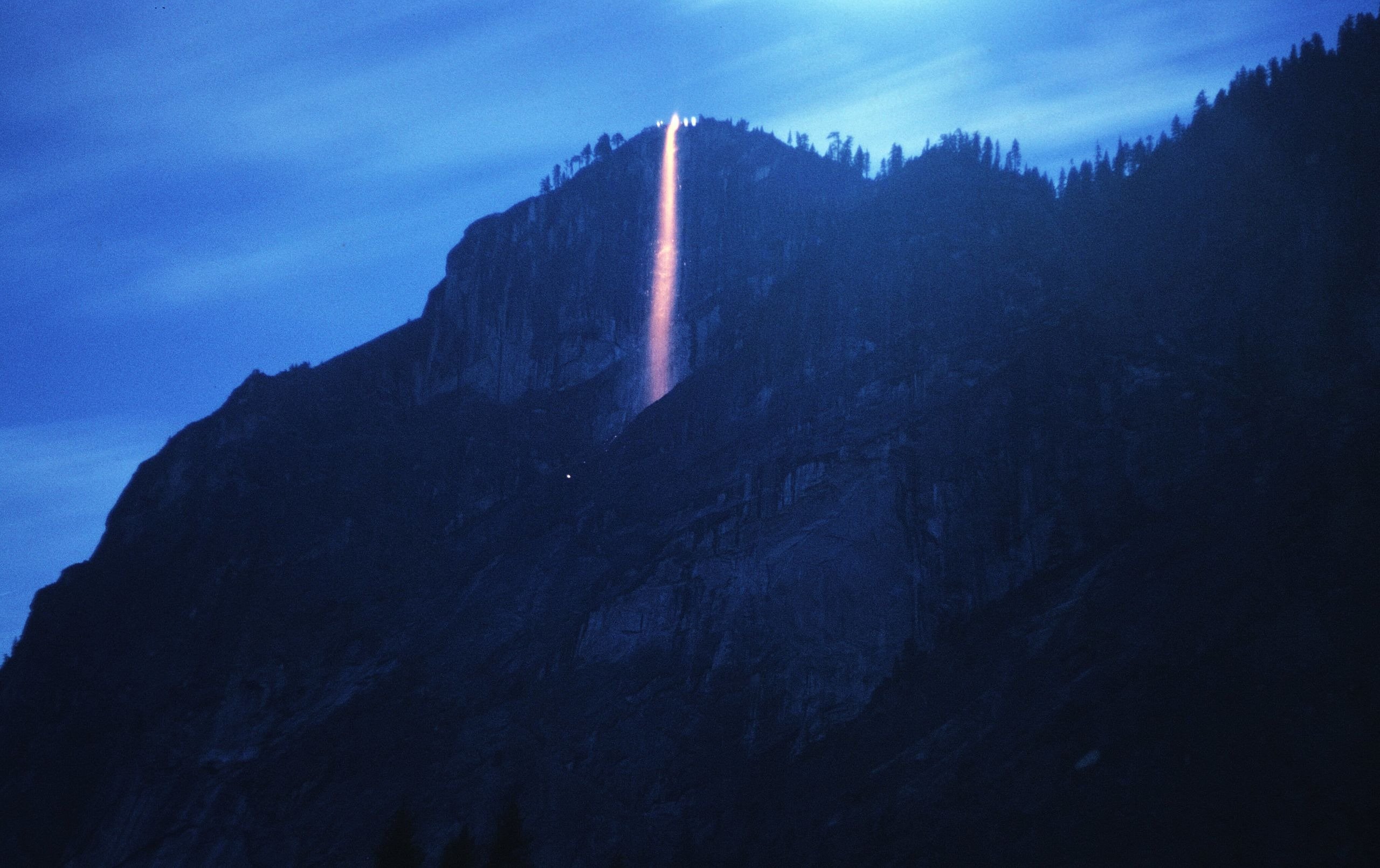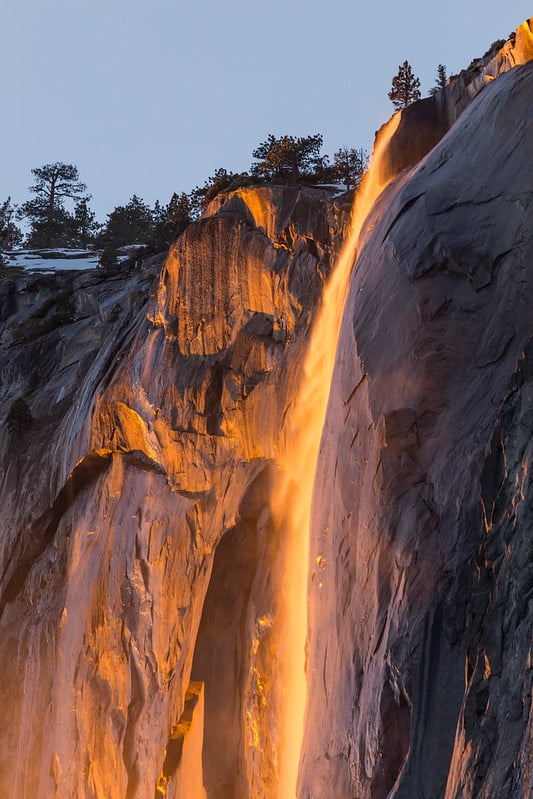
California's Yosemite National Park is famous for its ancient giant sequoia trees and massive rock formations. These include tEl Capitan and Half Dome. However, from mid-to-late February, the main draw is the Horsetail Fall. The seasonal waterfall flows over the eastern edge of El Capitan every winter. During the last two weeks in February, it often transforms into a stunning "Firefall." The natural phenomenon occurs around 5 to 15 minutes before sunset. It lasts just a few minutes.
Certain conditions have to be met for the Firefall to occur. For starters, there must be enough snow. Also, the temperature has to be warm enough for the snow to melt and flow down the rock's edge. But even a strong waterfall does not guarantee a Firefall.
For that to happen, the skies have to be clear and cloudless. Even a slight haze can ruin the illusion of fire tumbling down the cliffs. Additionally, the Sun has to hit the waterfall at the right angle to set it "ablaze."

Photographers have known about the Yosemite Firefall since the 1940s. However, its popularity has recently risen due to social media. On February 22, 2019, a record 2,200 people crowded into the small viewing areas to see the fleeting light show. Many visitors spilled onto riverbanks and walked over sensitive vegetation. They also left behind a large amount of trash.
Since then, the two easily accessible Firefall viewing areas have been closed to visitors every February. The event can only be viewed by hiking 1.5 miles (each way). Furthermore, reservations are required for park entry during the last three weekends of February.
Resources: Wikipedia.org, Foxweather.com, Travel,and eisure.com